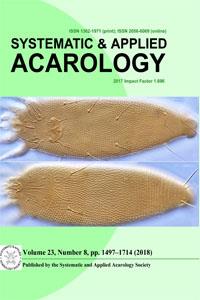Plant-inhabiting mites are among the most diverse arachnid groups in terrestrial ecosystems. Because plant mites depend on their host plants, plant-related characteristics can be expected to be good predictors of mite diversity in natural vegetation, as observed for other groups of plant-inhabiting arthropods. Here, we use plant-related characteristics to predict plant mite diversity in Brazilian natural vegetation. We compiled a total of 206 mite species recorded on 343 host plant species, the majority from the Brazilian Atlantic Forest and Cerrado biomes. Among the plant taxa that hosted the highest mite richness are the families Euphorbiaceae, Meliaceae and Fabaceae, and the genera Trichilia (Meliaceae), Actinostemon and Alchornea (Euphorbiaceae). Mite species richness in different Brazilian inventories was positively influenced by sampled plant species richness and taxonomic range of sampled plants. In addition, we also found a positive correlation between plant family size (the number of plant species in a family) and total mite richness and predatory mite richness. Based on our analyses, we estimated a potential 20685 plant mite species for Brazil, which is almost 100 times higher than the number currently compiled in this study. Our findings suggest the richness of host plant species an important predictor of Brazilian mite diversity and revels that the current record of mite species richness for Brazil is only a small fraction of the potential diversity harbored by rich Brazilian flora.
How to translate text using browser tools
6 August 2018
Investigating effects of host-plant diversity on Brazilian mite richness in natural ecosystems
Walter Santos De Araújo,
Rodrigo Damasco Daud
ACCESS THE FULL ARTICLE

Systematic and Applied Acarology
Vol. 23 • No. 8
August 2018
Vol. 23 • No. 8
August 2018
Brazilian hotspots
Euphorbiaceae
Phytoseiidae
Plant mites
Plant taxon size




